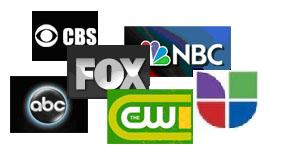Will Network TV Upfront CPM Increases Surpass the Double Digit Barrier?

As TV network Upfront indicators point to a very robust marketplace, there is an interesting precedent pointing to a possibility that average Upfront CPM increases could catapult past the double-digit barrier. This precedent from 2002 and 2003 is detailed below.Both buyers and sellers are preparing for an aggressive negotiating process as marketers maintain their budget shift from quarterly scatter buying to the Upfront market, and as most major marketers maintain or increase their network TV budgets. Only pharmaceuticals appear to be flat or down year-to-year. Networks are poised to hold out for at least high single digit cost-per-thousand increases and the looming question is whether the double-digit barrier will be crossed by one or more networks. There are also several moderating issues that argue against double-digit increases. Below are the arguments why these increases may materialize, and also why they may be unrealistic.
SELL-OUT LEVELS
Last year network sell-out for the broadcasters and leading cable nets ranged from the low-70 to low-80 percent range. Networks may opt to reduce sell-out this year in order to place increasing upward pressure on CPMs. Traditionally low CPM advertisers will be especially challenged as networks look not only at client-by-client CPM increases, but total revenue optimization. Networks can be confident that scatter market costs will continue to be higher than Upfront CPMs and that scatter demand is sustainable. In recent weeks, however, there have been reports of a cooling scatter market and available inventory at multiple networks.
NETWORK MANAGEMENT SHIFTS
The management shifts at ABC-TV, NBC-TV, FOX-TV and Univision also assure an interesting and dynamic negotiation process. With Comcast executives looking over the shoulders of a well-established NBC-TV and NBCU Cable team, it's less likely the network will step forward with early and aggressive share-of-market deals. NBCU also has the best total market perspective with its broadcast, cable, digital and syndication assets, and the most experienced team for analyzing market conditions. At ABC and at Fox, new teams have replaced highly respected veterans Mike Shaw and Jon Nesvig, and can be expected to push the upward boundaries of market demand. Univision and Telemundo are expecting to generate significant increases in both sell-out and costs-per-thousand, with management shifts and anticipated census results pressuring sales execs to deliver strong revenue gains.
HISTORICAL PRECEDENT FROM 2002 and 2003 UPFRONTS
See the detailed charts below. Following the 2001 recession when network Upfront revenues declined and scatter markets were soft, the TV business rebounded quickly and forcefully in 2002/2003 and especially in 2003/2004. Similar market patterns appear to be emerging, following the 2009 recession.
In the 2002/2003 Upfront, average CPM increases for broadcast networks were 9.7%. In the 2003/2004 Upfront, which would parallel this year chronologically, average primetime CPMs increased 15.3%. All broadcast dayparts averaged 13.9% (see charts below) and cableCPM increases were 9.5%. Will similar economic dynamics drive 2011/2012 CPM increases toward those same double-digit increases? Last year, averagebroadcast network CPM increases were 8.1%-8.5% and cable networks generated CPM increases of 7.0-8.0%. If the pattern from a decade ago holds, primetime broadcast network CPMs could increase this year by an average 12.0% to 13.5%.
CONTEXT AND COMMENT
Earlier last month, I reported that "the 2011/2012 Network TV Upfront Season should be satisfying for the networks, with CPM growth in the 3% to 5% range for broadcasters and 5%-8% range for cablers (with exceptions of course for high and low outliers)." This forecast, which now appears to have been overly conservative, recognized that this recovery, unlike the 2003-2004 rebound, is being led by industrial production rather than consumer spending, reduced unemployment and retail growth. There continue to be clear indications, such as soft retail sales and high unemployment, that marketers will be forced to rethink their aggressive ad spending strategies.
There remains tremendous marketplace pressure and client procurement realities that work to hold CPM increases in the single digits. Any number of economic factors may emerge to depress the market, and the fact remains that marketers have not yet finalized their Upfront budgets. Whether 2003/2004 Upfront CPM increases represent a fair comparison to this year's Upfront is impossible to say, but it is clear that similar positive patterns are emerging and this may be the most challenging Upfront negotiating period in years for buyers and for sellers.
2002-2004 Broadcast Network Primetime Cost-Per-Thousand Increases
Source: Jack Myers Media Business Report
UPFRONT MARKET
| NETWORK AND DAYPART | SEASON | |
| 2002/2003 | 2003/2004 | |
| Primetime | ||
| ABC | 5.0% | 15.0% |
| CBS | 11.0% | 18.0% |
| NBC | 8.0% | 14.0% |
| Fox | 7.0% | 14.0% |
| WB | 14.0% | 20.0% |
| UPN | 13.0% | 11.0% |
| The CW | ||
| Primetime | ||
| Primetime Average | 9.7% | 15.3% |
| AM News | 7.0% | 14.0% |
| Daytime | Flat | 10.0% |
| Evening News | 1.0% | 8.0% |
| Late Night | 7.0% | 15.0% |
| Total Broadcast Average | 13.9% | |
You are receiving this e-mail as a corporate subscriber to Jack Myers Media Business Report. Re-distribution in any form, except among approved individuals within your company, is prohibited. As a subscriber you have full access to all archives and reports at www.jackmyers.com. If you require your ID and password, contact maryann@jackmyers.com
INSERTS


